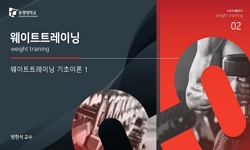Objective: This purpose of this study was to analyze the relationship between dimensionless leg stiffness and kinetic variables during gait performance, and its modulation with body weight. Method: The study sample consisted of 10 young women divided ...
http://chineseinput.net/에서 pinyin(병음)방식으로 중국어를 변환할 수 있습니다.
변환된 중국어를 복사하여 사용하시면 됩니다.
- 中文 을 입력하시려면 zhongwen을 입력하시고 space를누르시면됩니다.
- 北京 을 입력하시려면 beijing을 입력하시고 space를 누르시면 됩니다.

Relationship between Dimensionless Leg Stiffness and Kinetic Variables during Gait Performance, and its Modulation with Body Weight = Relationship between Dimensionless Leg Stiffness and Kinetic Variables during Gait Performance, and its Modulation with Body Weight
한글로보기https://www.riss.kr/link?id=A102132434
- 저자
- 발행기관
- 학술지명
- 권호사항
-
발행연도
2016
-
작성언어
-
- 주제어
-
KDC
600
-
등재정보
KCI등재
-
자료형태
학술저널
- 발행기관 URL
-
수록면
249-255(7쪽)
- 제공처
-
0
상세조회 -
0
다운로드
부가정보
다국어 초록 (Multilingual Abstract)
Objective: This purpose of this study was to analyze the relationship between dimensionless leg stiffness and kinetic variables during gait performance, and its modulation with body weight. Method: The study sample consisted of 10 young women divided into 2 groups (Control, n=5 and Obese, n=5). Four camcorders (HDR-HC7/HDV 1080i, Sony Corp, Japan) and one force plate (AMTI., USA) were used to analyze the vertical ground reaction force (GRF) variables, center of pressure (COP), low limb joint angle, position of pelvis center and leg lengths during the stance phase of the gait cycle. Results: Our results revealed that the center of mass (COM) displacement velocity along the y axis was significantly higher in the obese group than that in control subjects. Displacement in the position of the center of the pelvis center (Z-axis) was also significantly higher in the obese group than that in control subjects. In addition, the peak vertical force (PVF) and dimensionless leg stiffness were also significantly higher in the obese group. However, when normalized to the body weight, the PVF did not show a significant betweengroup difference. When normalized to the leg length, the PVF and stiffness were both lower in the obese group than in control subjects. Conclusion: In the context of performance, we concluded that increased dimensionless leg stiffness during the gait cycle is associated with increased velocity of COM, PVF, and the change in leg lengths (%).
동일학술지(권/호) 다른 논문
-
- 한국운동역학회
- ( Jung Yee Kim )
- 2016
- KCI등재
-
Effects of Vertical Alignment of Leg on the Knee Trajectory and Pedal Force during Pedaling
- 한국운동역학회
- ( Daehyeok Kim )
- 2016
- KCI등재
-
Evaluation of Gait Assistive Devices in Patients with Parkinson`s Disease
- 한국운동역학회
- ( Mi Young Kim )
- 2016
- KCI등재
-
- 한국운동역학회
- ( Seungbum Park )
- 2016
- KCI등재




 KISS
KISS





